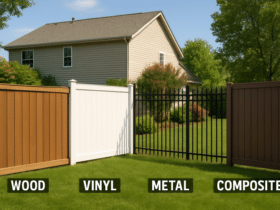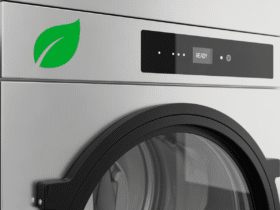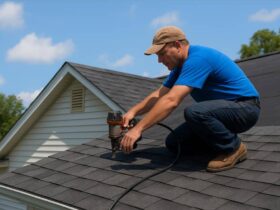Key Takeaways:
- Roof damage comes in many forms; not all signs are visible from the ground. Early detection is crucial for a successful insurance claim.
- Most homeowner insurance policies cover sudden and unexpected damage, but ongoing wear or neglect is typically excluded.
- Accurate documentation, understanding your policy terms, and proactive maintenance can greatly improve your claim’s success.
- Helpful resources like the Insurance Information Institute’s roof coverage guide and insights from NPR about insurance rate trends offer valuable information for homeowners navigating claims.
Table of Contents:
- What Kinds of Roof Damage Are Typically Covered by Insurance?
- Common Visible Signs Your Roof May Need Attention
- Less-Noticeable Indicators of Roof Damage
- Weather Events Most Likely to Cause Insurance-Eligible Damage
- How to Document Damage for a Strong Claim
- When to Schedule a Professional Roof Inspection
- How to File an Insurance Claim for Roof Damage
- Common Pitfalls That Can Hurt Your Claim
- Recent Trends: Climate, Coverage, and What to Expect
- Final Tips for Navigating Roof Damage Claims
What Kinds of Roof Damage Are Typically Covered by Insurance?
Home insurance policies generally cover roof damage that results from sudden, unpredictable events. Known as “covered perils,” these typically include windstorms, hail, fire, lightning, and falling debris—events outside your control that could quickly compromise the safety and integrity of your roof. It’s important to note that standard policies often exclude damage resulting from routine wear and tear, gradual leaks, infestation from animals, or negligence.
The distinction between covered and uncovered damage means that filing a successful claim relies on proving that a specific incident—not age or neglect—led to your roof’s compromised state. Before you claim a new roof on insurance, review your homeowner’s policy for limitations or unique deductibles, especially if your home is in a region known for severe weather.
Common Visible Signs Your Roof May Need Attention
Some roof damage is immediately obvious. After a major storm or high winds, scan your roof from the ground for missing shingles, scattered tiles, or buckled flashing around vents and chimneys. Noticeable “bald spots,” torn underlayment, and warped metal flashing are red flags. Even if your roof appears intact from a distance, close inspection (preferably by a professional) can reveal split wood, dented vents, and punctured membrane layers beneath the surface.
- Shingles that have blown away, curled, or appear cracked
- Tiles that are chipped, broken, or out of place
- Flashing that is loose, rusted, or showing signs of gaps near seams
- Obvious holes, impact marks from large hail, and indentations around vents or skylights
Water stains on ceilings, sagging spots inside the home, and dripping after storms indicate water is making its way through the roofing system. If you notice these signs, documenting them promptly improves your chances of a prompt and fair insurance assessment.
Less-Noticeable Indicators of Roof Damage
Not all damage screams for attention. In fact, some of the most insidious problems can lurk just out of sight, slowly undermining structural integrity until a small issue becomes a major repair. Look for subtle clues such as a gradual increase in your energy bill (possibly due to insulation issues caused by a compromised roof) or faint, musty odors that could suggest hidden leaks or moisture intrusion.
- The light peeking through roof boards in the attic, especially at the ridge or eave lines
- Dark streaks, mold growth, or unexplained moisture in attic insulation
- Accumulation of granules in gutters, signaling shingle degradation
- Peeling paint on exterior walls below the roofline, which may indicate water seepage
- Loose nails or fasteners visible along ridgelines or flashing
Staying alert to these hidden signs and responding quickly can stop further deterioration, protect supporting structures, and make your insurance claim easier to defend.
Weather Events Most Likely to Cause Insurance-Eligible Damage
Mother Nature is the most common source of roof damage that insurance companies recognize. Severe thunderstorms, hail, hurricanes, tornadoes, and falling trees consistently top the list of claim-triggering events. Hailstones can bruise, dent, or crack roofing materials, while high winds can tear shingles right off or force water beneath protective layers.
Wildfires and lightning strikes create additional hazards, often destroying the roof, attic spaces, and support beams. Heavy snow and ice dams can cause weight roofs not to be built to handle, leading to sagging or even collapse. Areas prone to these events sometimes have separate insurance deductibles for wind or hail, so reading your policy details is more important than ever.
Insurance policies evolve quickly in response to climate trends. Whether it’s a new storm deductible or changes in eligible roof materials, these details could affect your claim and wallet.
How to Document Damage for a Strong Claim
Precise documentation is the backbone of any successful roof insurance claim. Start by taking wide-angle pictures that show the roof’s overall condition, then zoom in on specific areas of visible or suspected damage. Date-stamp these photos or keep extra details in your smartphone gallery whenever possible. Document water stains, mold spots in the attic, or any damaged insulation.
- Photograph and video all damage, internal and external, from multiple angles
- Retain recent inspection reports, prior repair receipts, and any warranty documents
- If a storm occurred, include dated weather reports or news articles to support the cause of loss
- Request written, itemized estimates from at least two licensed roofing contractors
- Maintain a detailed timeline from discovery of the damage to each contact with your insurance provider
Avoid discarding damaged materials until after the adjuster’s visit, and keep a simple log summarizing conversations with repair professionals, insurers, or adjusters. This information will become part of your official claim package.
When to Schedule a Professional Roof Inspection
A professional inspection is recommended after major storms and periodically for routine roof health. A trained roofer can spot early failure points, underlying moisture problems, or detailed storm damage that may qualify for insurance but get missed in a casual look-over.
Many reputable roofers will provide inspection reports tailored for insurance claims, including photos, written evaluations, and repair recommendations broken down by urgency. Professional inspectors may also notice subtle hail impacts, loosened fasteners, or insulation issues that aren’t always apparent to homeowners or insurance adjusters.
- Right after visible storm damage (wind, hail, trees, etc.)
- If internal leaks or ceiling stains appear suddenly
- When buying or selling a home, assess the roof’s true condition
- Regular preventive maintenance at least every 2-3 years or annually if the roof is aging
Documentation from a third-party inspector can lend valuable credibility to your claim, often speeding the insurance process.
How to File an Insurance Claim for Roof Damage
Filing a claim typically begins with notifying your insurance company when damage is discovered. Most carriers offer online portals, dedicated apps, or 24/7 customer service to start the claims process immediately. When submitting a claim, include all your documentation—photographs, inspection reports, repair estimates, and a clear, factual description of the event (such as the specific storm that caused visible damage).
- Contact your insurance company and submit an initial claim
- Provide supporting documents, including time-stamped photos and third-party assessments
- Schedule an onsite inspection with the insurance adjuster
- Review the adjuster’s summary for accuracy, asking questions about any denied portions
- Negotiate or appeal if the proposed settlement doesn’t reflect actual repair/replacement costs or if exclusions seem applied incorrectly
- Once resolved, coordinate with your chosen contractor and your insurer for payment arrangements
Throughout the process, remain proactive and organized. Quick responses and thorough records can dramatically reduce stress, unnecessary delays, and disputes.
Common Pitfalls That Can Hurt Your Claim
- Delaying notification: Waiting to report damage can raise suspicions and may result in legitimate claims being denied for “late notice.”
- Inadequate documentation: A lack of photos, repair estimates, or clean timelines works against you if any part of the claim is challenged.
- Neglecting regular maintenance: Insurers can deny claims if basic upkeep is ignored or if the damage stems from pre-existing wear and tear.
- Discarding evidence: Throwing out shingles, underlayment, or debris before adjuster review can weaken your proof.
- Poor communication: Failing to ask questions or push back against unclear denials often results in fewer payouts or drawn-out disputes.
Avoiding these mistakes will help with your current claim and boost your credibility for future interactions with your insurer.
Recent Trends: Climate, Coverage, and What to Expect
In recent years, insurance policies have gotten more complex in response to climate change and increased claims frequency. Some insurers add specific deductibles for wind or hail, limit payouts on roofs beyond a certain age, or require higher-quality materials to maintain full coverage. With rising costs related to frequent severe weather events, many policies are scrutinized for minor claims, and premiums often rise with each filed claim.
As outlined in NPR’s report on insurance rates and climate shifts, it is essential to be informed about evolving claim practices, average repair costs, and policy exclusions in your region. Homeowners in storm-prone areas may find investing in impact-resistant roofing materials increasingly beneficial.
Review your insurance plan annually and pay attention to policy changes, even if you haven’t filed a claim. This helps you understand how and when to claim a new roof on insurance as your needs and local climate trends change.
Final Tips for Navigating Roof Damage Claims
Responding quickly and knowledgeably to roof trouble is your best defense against out-of-pocket costs and unnecessary headaches. Begin by thoroughly documenting the condition of your roof both before and after any event that could cause damage. Regular inspections and routine maintenance offer peace of mind and strengthen your case should you need to file a claim. Understanding the difference between covered perils and maintenance-related issues outlined in your insurance policy is important. Document all maintenance routines and professional inspections as part of your ongoing records.
Establishing relationships with reputable, licensed roofing contractors before you need major repairs can save time and stress. When faced with confusing policy language, turn to trusted resources like the Insurance Information Institute for clarity. Always treat insurance communications with care—stay organized, clear, and professional, as each interaction can impact your future premiums. By staying alert to signs of roof damage and being proactive with documentation and communication, you’ll be well-prepared if the need to file a roof insurance claim arises. Ultimately, knowledge and preparedness empower you to protect your property and finances for years.













